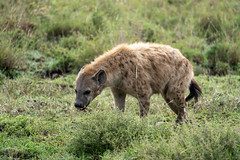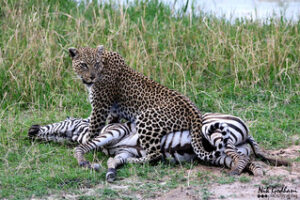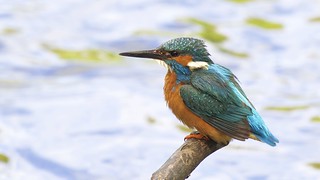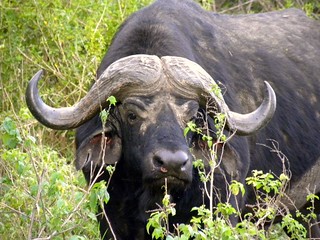The answer to the question of the best time of the year to go for Mt. Kilimanjaro climbing vary considerable from different players. From the tour operator, guides to the tourists. This is so because the mountain is characterized with a highly changing weathers over the years. These weather changes are highly unpredictable which make the best time to go for mountain climbing also unpredictable.
To truly understand the best time of the year to go for mountain Kilimanjaro climbing, you will need to understand the mountain changes, ecological system of the mountain, the difficult of the terrain and the trail to be taken.
Understanding Kilimanjaro’s Climate
Even though the mountain is close to the equator, it weather vary significantly from the one of equator. This is so because of the high altitude of the mountain compared to other places on equator line.
The park experience majorly two seasons, the dry season and the wet season. The dry season run from June to October and January to March. During this season the clouds are clear, and wildlife viewing is at optimal.
Conversely, the wet season occurs from late March to early June and from late October to early December. During this season the cloud is not clear, the rainfall is more frequent which makes the trekking more challenging, and the trails are muddier, but the temperatures are cooler.
Temperature Variations: the more you move further to the higher altitude, the temperature keeps on dropping. At lower slop the temperature is mild at around 20 to 27 degrees Celsius, and it keeps on dropping as you climb further toward the top. The temperature is likely to drop even to negatives especially at night.
The temperature at Kilimanjaro is determined by several factors like the time of the day, whether night or day, the altitude and the season whether dry or rainy season. Be read for the changing temperature regardless of whether it is dry or wet season.
Ecological Zones and Climbing Routes
The park has 5 unique ecological zone, each offering a different flora and fauna. These ecological systems include the lush rainforest zone, the heath and moorland zone, the alpine desert zone, the arctic zone, and the summit zone. This ecological system will offer a breathtaking sight to the climbers.
Rainforest Zone
(1,000-2,800 meters): The lower slopes of the mountains are characterized by high rains throughout the year. This has made the base area to be green with lush rainy forest because of that heavy rainfall. Especially during the wet season, the trails are muddy which make base area very challenging to the climbers.
Heath and Moorland Zone
(2,800-4,000 meters): This zone faces less rainfall than the rainforest zone the rainforest is no more but with a lot of grassland. This zone still experiences some rain pours. The skies are clearer during the dry season in this area.
Alpine Desert Zone
(4,000-5,000 meters): This is characterized with barren rocky landscape and sparse vegetation. The area experience very little rainfall compared to the first two zones. The temperatures are always very low especially at night.
Arctic Zone
(5,000-5,800 meters): As you approach the summit, you will enter this zone that is characterized with harsh weather conditions. The zone is characterized with glacier and permanent ice field. The conditions at this zone are characterized with cold temperatures and less oxygen. You must train for this condition if you are to complete the summit
Choosing the Right Climbing Season
Kilimanjaro has five different ecological zone which makes it necessary to consider different factors before determining when to go for the climbing. The final decision will rest with your choice of preference. Before making your decision consider the following factors.
Weather and Climatic Conditions
The dry season, spanning from late June to early October and from late December to early March, generally offers the most favorable weather conditions for climbing Kilimanjaro. During this time, precipitation is minimal, skies are clear, and temperatures are relatively mild, especially at lower elevations. Climbers can expect better visibility, drier trails, and more stable climbing conditions during the dry season, enhancing their overall experience on the mountain.
Crowds and Availability
The popularity of Kilimanjaro as a climbing destination means that certain seasons may experience higher levels of crowding and competition for permits and accommodations. The dry season, particularly from July to September, tends to attract the largest number of climbers, leading to more congested trails and busier campsites. Climbers seeking a quieter experience may prefer to climb during the shoulder seasons, such as late September to early November or late March to early June, when crowds are typically smaller, and availability may be more favorable.
Trail Conditions and Accessibility
The wet season, characterized by higher levels of precipitation and cloud cover, can significantly impact trail conditions and accessibility on Kilimanjaro. Heavy rainfall may result in muddy and slippery trails, making certain sections of the climb more challenging and hazardous, especially in the rainforest and moorland zones. Additionally, cloud cover during the wet season can obscure visibility and limit panoramic views of the surrounding landscape. Climbers should be prepared for these potential obstacles and exercise caution when navigating wet and slippery terrain.
Personal Preferences and Fitness Levels
Ultimately, the best time to climb Kilimanjaro may vary depending on individual preferences, fitness levels, and tolerance for adverse weather conditions. Some climbers may prioritize clear skies and stable weather. While others may prefer quieter trails and a more serene atmosphere. Additionally, climbers should assess their physical fitness and acclimatization abilities when planning their ascent. As altitude-related challenges can affect climbers regardless of the season.
Conclusion
In conclusion, the best time to climb Mount Kilimanjaro depends on a variety of factors. These include weather patterns, ecological conditions, trail accessibility, and personal preferences. While the dry season, from late June to early October and from late December to early March, generally offers the most favorable weather conditions for climbing. Climbers must also consider factors such as crowds, trail conditions, and their own fitness levels when planning their ascent.
Regardless of the season chosen, climbing Kilimanjaro is a challenging and rewarding adventure that requires careful preparation, physical conditioning, and a spirit of perseverance. By understanding the unique climatic and ecological characteristics of the mountain and selecting the optimal timing for their ascent, climbers can maximize their chances of success and enjoy an unforgettable experience on Africa’s highest peak.






